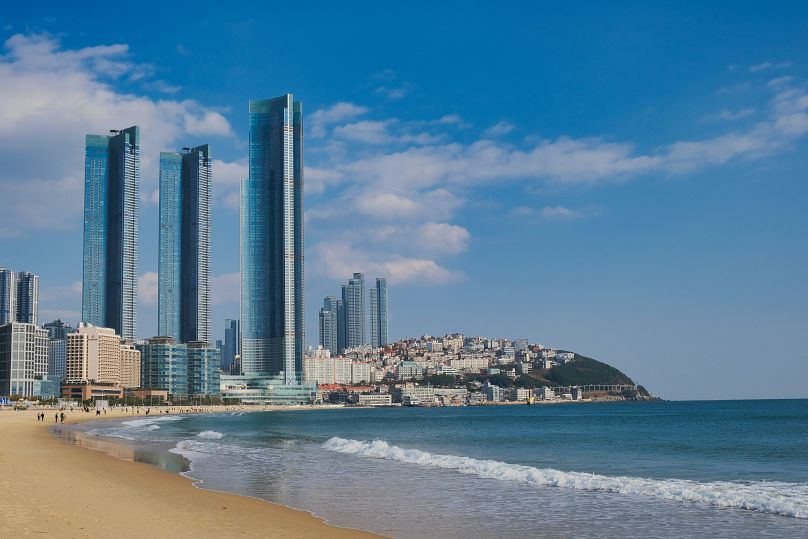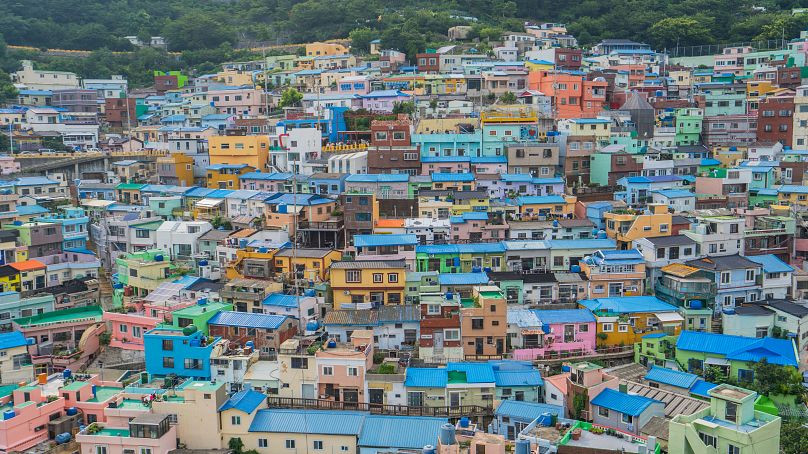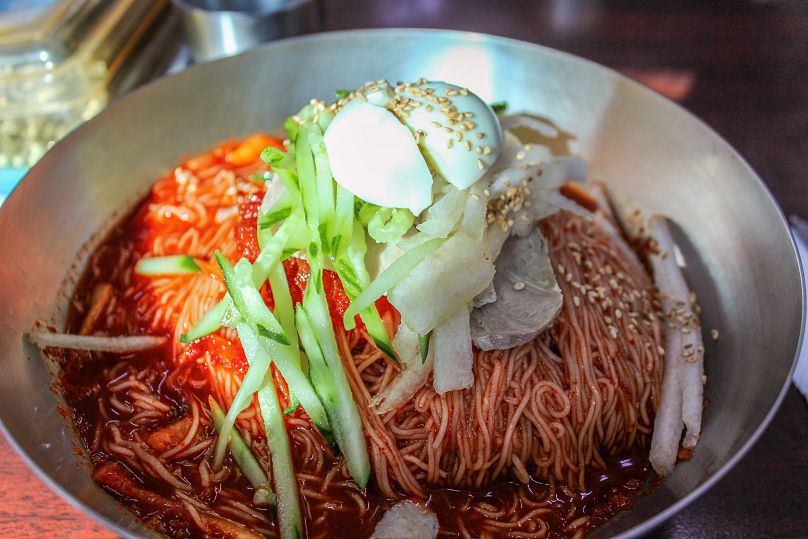Our guide to the best attractions and most delicious food in Busan, South Korea’s second city.
Busan is South Korea’s second city, often dubbed the country’s summer capital.
Koreans and foreigners alike flock to its six beaches, glitzy marina and cafe-lined boardwalk.
Beyond the seaside, the city lures visitors with ancient temples, hundreds of spas and the colourful Gamcheon Culture Village to explore.
Here’s our guide to the best attractions and most delicious food in Busan.
What to do in Busan: Hit the longest beach in South Korea
Not only does Busan boast six beaches, it also lays claim to the longest in the country. Haeundae Beach stretches 1.5 kilometres down the front of the eponymous Haeundae District.
The shore is lined with sleek skyscraper hotels that double up as nightlife venues.
Various festivals take place along the sandy strip. In January, the Polar Bear Club sees participants plunge into near-freezing water.
Slightly easier to get involved in is the summer Haeundae Sand Festival where artists from around the world create impressive sand sculptures.
For further relaxation, head to one of the city’s 450 spas (the most in any city on the peninsula).
Here you can experience the Korean-style ‘jjimjilbang’ bathhouse culture where there are hot and cold pools, saunas and communal sleeping rooms.
Spas are gender separated and clothing or swimwear should not be worn. You should have a ‘seshin’ scrub before entering pools or saunas to ensure cleanliness.
In Busan, visit Spa Land for a complex of over 20 spas fed by natural thermal spring water.
What to see in Busan: Visit Gamcheon Culture Village and an ancient temple
The antithesis to Busan’s ultra-modern beach highrises is the 20th century Gamcheon Culture Village.
The hillside jumble of colourful houses was established in the 1950s by war refugees.
Nicknamed ‘lego houses’, the dwellings have been given a facelift in recent years and the area is now a cultural art space.
Meander the steep streets and you’ll stumble across murals, craft boutiques and hip cafes.
Head further back in time with a visit to the Haedong Yonggungsa Temple located on the coast in the northeast of the city.
The religious building dates back to 1376 and was partly reconstructed in the ‘70s. Squeezed in between rocks, it is a rare example of a temple right on the seafront (most are found in the mountains).
The complex features colossal golden statues, a cave sanctum and a three-story pagoda with four lions symbolising joy, anger, sadness and happiness.
What to eat in Busan: Choose-your-own seafood and spicy noodles
South Korea’s second city will also tantalise your tastebuds with fresh seafood and tasty street food.
First stop should be the iconic, 600-year-old Jagalchi Market. Watch from the sidelines as a raucous bartering ensues over fish and seafood from sea cucumbers to blow fish.
At the restaurants on the second floor, you can try some of the market’s products, or select them yourself on the first floor for the kitchens to prepare for you.
For more budget-friendly fare, stop at Bupyeong Kkangtong Market to munch on street food like eomuk (fish cake), bindaetteok (mung bean pancake) and guksu (noodles).
Don’t leave Busan without trying its signature dish, milmyeon. This is a meaty broth with noodles, topped with cucumbers, a boiled egg, meat and Korea’s spicy chilli paste gochujang.
Find it in hole-in-the-wall shops or sit on a plastic stool at stalls along Gukje Market Food Street where the dish is prepared by elderly women.














